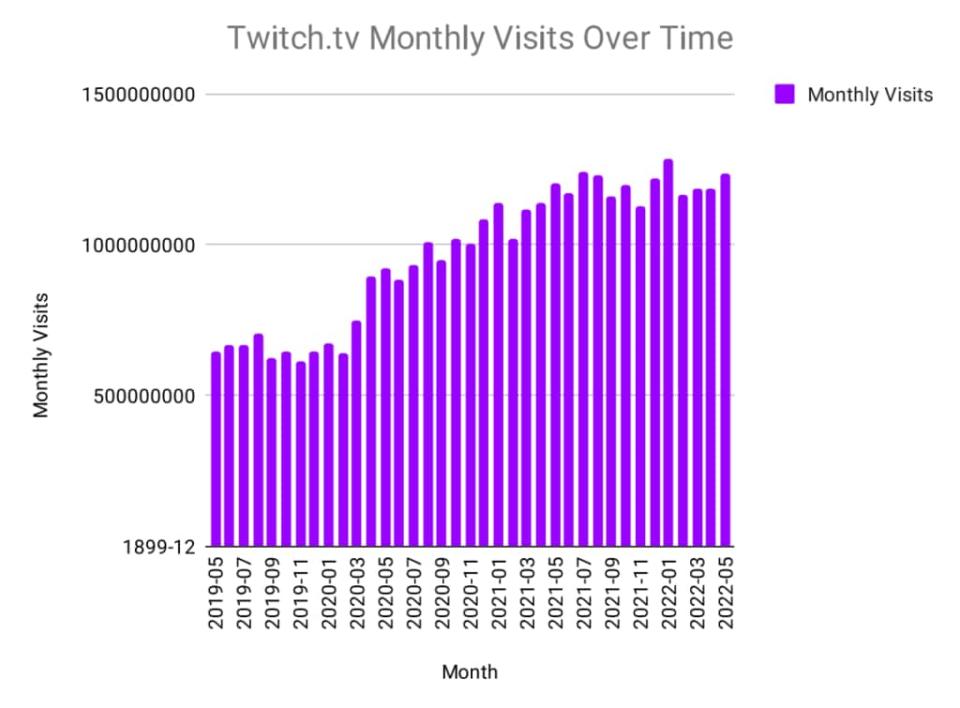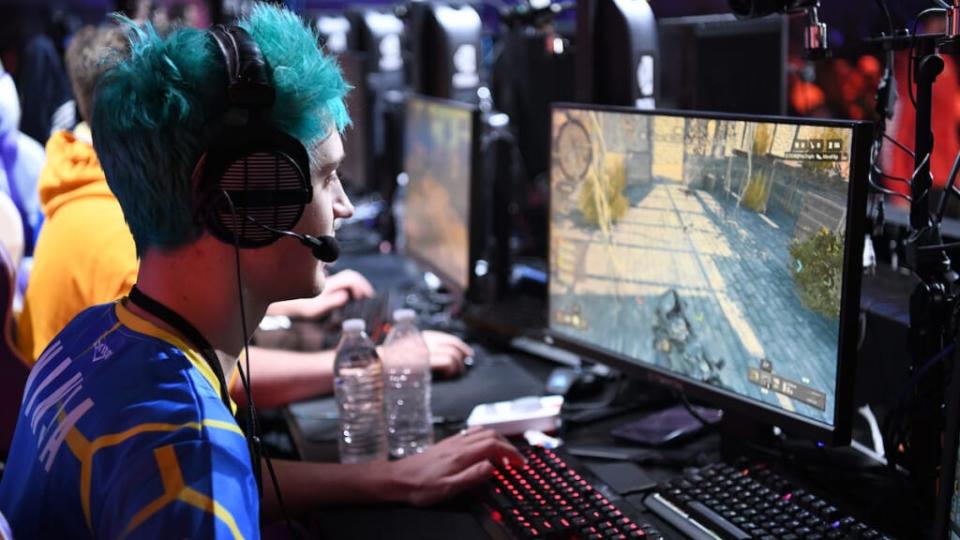Can Twitch Still Rule the Livestream App Market as Growth Slows? | Chart
Livestreaming platform Twitch has risen to the top spot in the livestream app market, boosted by a doubling in monthly visits since the pandemic. But it isn’t immune to a slowdown in users affecting the entire industry amid mounting competition now that COVID has peaked.
The livestream service that boasts 31 million average daily users started out owning gaming but has branched out to streams on travel, cooking and art content. Now it dominates 73% of the market share in average daily users globally, according to Sensor Tower.
But after huge growth in the first year of the pandemic, the platform’s user base is starting to plateau in recent months. The platform peaked with monthly visits this January at more than 1.2 billion, but it is falling steady at around 1.1 billion monthly visits from February to April. It increased again to 1.2 billion in May, but experts say Twitch’s growth will begin to slow.
“Recent Similarweb data shows that the platform is experiencing a deceleration or stagnation in growth as it matures, facing a world that’s transitioning back to normal and the looming threat of its strongest competitor — Youtube,” Sneha Pandey, Similarweb insights manager, told TheWrap.

Like many digital services, Twitch saw an uptick in traffic during the pandemic as travel and in-person activity came to a halt. From May 2019 to May 2022, Similarweb estimates the platform has nearly doubled monthly visits, which have grown a whopping 93% since the start of COVID. This year, the service has amassed more than 6 billion total visits as of May, according to Similarweb. Twitch originally launched in 2011 as a spinoff of streaming platform Justin.tv and was later acquired by Amazon in 2014 for $970 million.
Out of the top 10 livestream apps, Twitch has held this top spot since 2020, while smaller competitors Bigo Live, Uplive and Tango are slowly establishing themselves in local markets like India.
“Since its inception, Twitch rapidly dominated the video game livestreaming market by accumulating a massive creator and viewership base in the online gaming community,” Pandey said.

However, Twitch hasn’t been immune to a slowdown in activity lately, much like other platforms that saw activities spike during COVID. Recent Similarweb analysis shows the platform is seeing some stagnation as it matures in an economy transitioning back to previous levels. Inevitably, companies will start to see a correction across the digital and streaming industries as accelerated growth declines.
“Despite the slowdown, Twitch continues to grow, but at a slower rate than the previous year. On average, 13% of its audience comprises new users,” Pandey added.
Another reason Twitch might face a downturn is increased competition in the market from other platforms that have integrated livestreaming features. YouTube remains one of Twitch’s biggest rivals in the video business, while TikTok and Instagram have also invested more into content creator programs and livestreaming capabilities.
“While Twitch will likely remain the top livestreaming platform in Western markets even amidst challenges from YouTube and Facebook, elsewhere Twitch is facing growing competition from platforms that are better optimized or localized for their respective, mobile-first markets,” Dennis Yeh, insights analyst at Sensor Tower, said.
As the fight over content creators continues, the success of these platforms might come down to the diversity and monetization of user-generated content. Instead of heavily produced videos with a professional quality, users increasingly prefer authentic content they might see on their social media feeds, Flynn Zaiger, CEO of digital marketing agency Online Optimism, explained.
“Twitch streaming still feels like old-school, prepared social media, streaming with thousands of dollars’ worth of graphics cards, ring lights and LEDs [performance] shows,” Zaiger said. “The individuals using TikTok’s livestreaming features are far more toned down [than Twitch streams], and if consumer attitudes continue to prefer these more IRL-feeling platforms, you may see Twitch’s viewership drop.”
Representatives for Twitch didn’t respond to TheWrap’s request for comment.
Also Read:
How YouTube Is Winning the Fight for Content Creators | Charts

